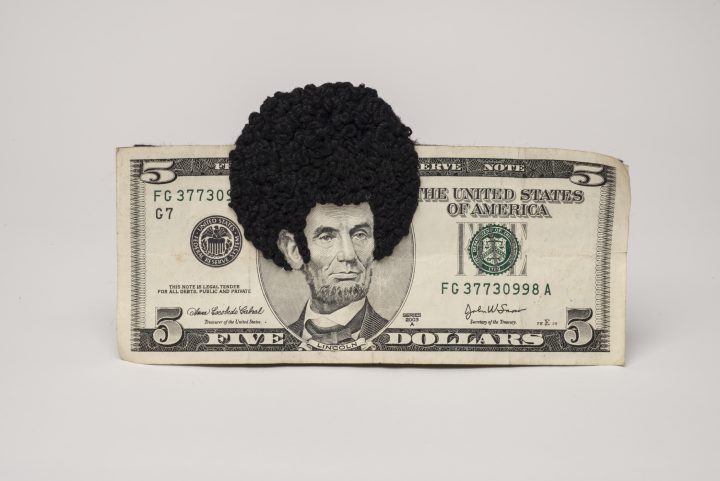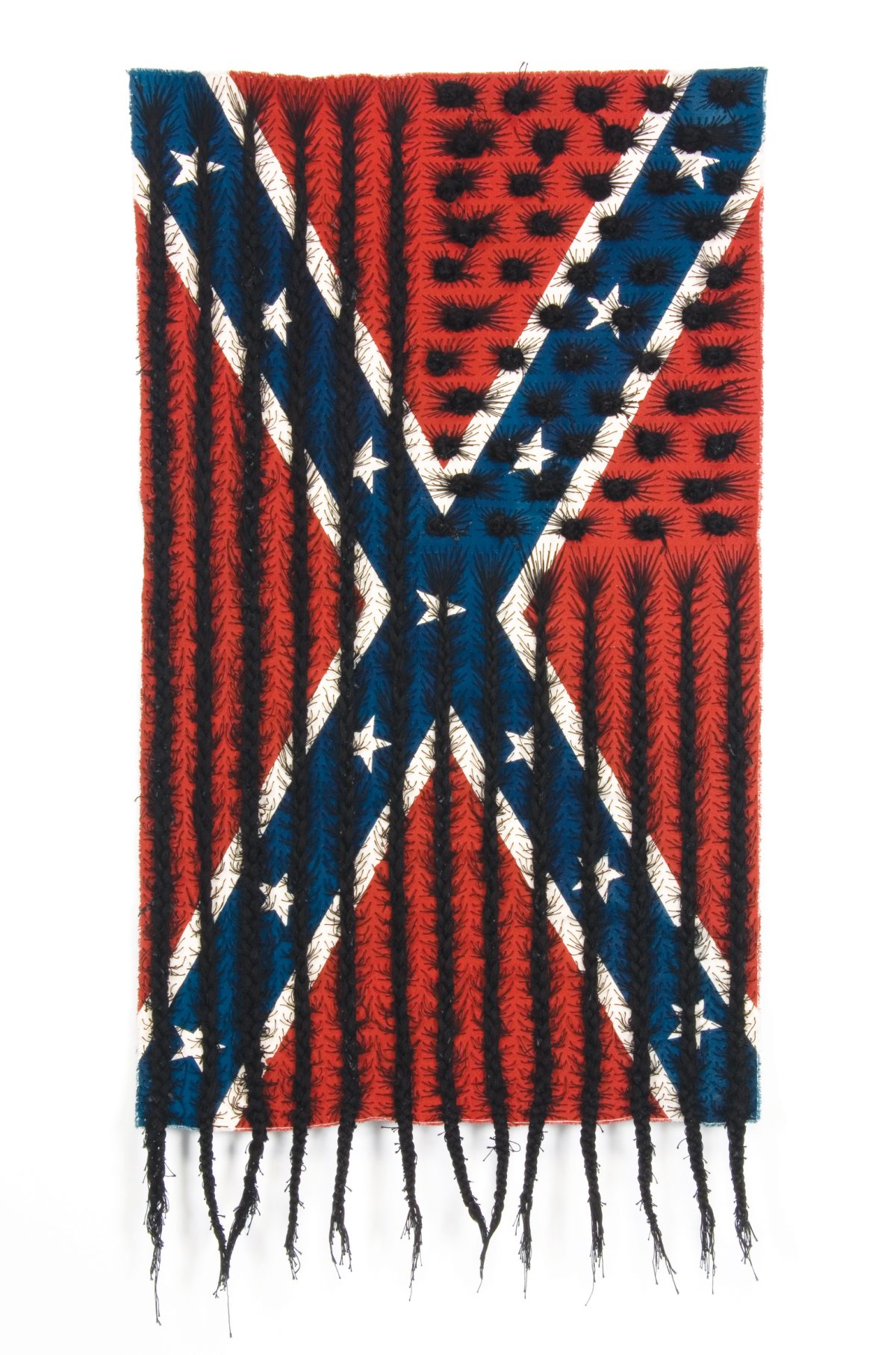
WASHINGTON, DC — Sonya Clark continually challenges us, ensconced as we might be in our smug niches of “art” and “craft.” The acrobatics and virtuosity she displays with mundane materials — hair, hair combs, beads, utilitarian cloth, and the occasional digital venture — belie our usual expectations of their possibilities and gnaw at the edges of conceptualism, sculpture, and performance. This is amply evident in Sonya Clark: Tatter, Bristle and Mend, the artist’s one-person exhibition, meticulously co-curated by Kathryn Wat and Hannah Shambroom, at the National Museum of Women in Arts.

Renowned for her explorations of the cultural and political aspects of hair — specifically Black hair — Clark does not disappoint in this dizzying survey of 100 works executed over the last 25 years. Essays in the catalogue adroitly outline the polemics of black hair in its natural state in our current societal context, complement Clark’s seeming endless hirsute permutations. A poem by Nicky Finney in the catalogue extols Clark’s advocacy: “She works for hair uncorrupted, unraveling tall ladders of hieroglyphic locks; “ while Bridget Cooks provides a sobering record of legal and sanctioning against Black women who dare to braid, dread or leave their kinky natural. Clark’s defiant celebration of black hair includes expanding afros embroidered on five dollar bills in the Afro Abe series, neckpieces constructed of dreaded hair, a likeness of Madam C. J. Walker (the country’s first Black female millionaire, who made her fortune from hair products) rendered through the negative/positive play of teeth on ordinary black pocket combs to capture, and the bravura sculptures and wall installations composed of accumulations of those same combs. We are impressed with the underlying mathematical impulse of her work (as in the Wig Series of the 1990s, featuring caps of braided patterns based on Fibonacci sequences). Her roving intellect is furthermore manifest in scientific models of meticulously beaded chromosomes that Cooks declares “suggest a universality of Blackness as fundamental to human origin.” And who would think of designing a personal font from their own hair, and an alternating neon sign that pulls the word “ciao” out of “Schiavo,” which translates as “slave.”

Also on view are Clark’s now iconic fiber works that glean the political and cultural nuances of this way of making, which has come to embody survival and resilience amid societal chaos and displacement. “Gele Kente Flag” (1995) features a patchwork of Ghanaian kente cloth, and could be reconfigured as a gele, the widespread women’s headwrap throughout west Africa. In “Ocotroon” (2018), the US flag appears as a braided and flowing thread version of hair, and in “Black Hair Flag” (2010) the stars and stripes of flag are braided and stitched over a painted version of the Confederate flag. “Unraveling” (2015) and “Confederate Flag of Truce” (2017) comprise artifacts related to on-going performance works that dismantle cultural myths by deconstructing the banners that embody their legacies.

With the variety of braiding, tying, sewing and beading techniques in evidence, it is notable that several works in the exhibition feature hands: allusions to the hands that execute this work, and the hands which pass these skills on from generation to generation. That may best be embodied in the sparsely elegant “Touch” (2002), where two tiny beaded hands meet, one reaching up for another which hangs from the ceiling on a length of beading that is 9-feet long. In its suggestion of an aching desire to make contact, the poignancy of this work is breathtaking, and coincidentally an apt metaphor for our times.
Sonya Clark: Tatter, Bristle and Mend is co-curated by Kathryn Wat and Hannah Shambroom, and continues at the National Museum of Women in Arts (1250 New York Avenue, NW, Washington, DC 20005) until June 28, 2021.
0 Commentaires